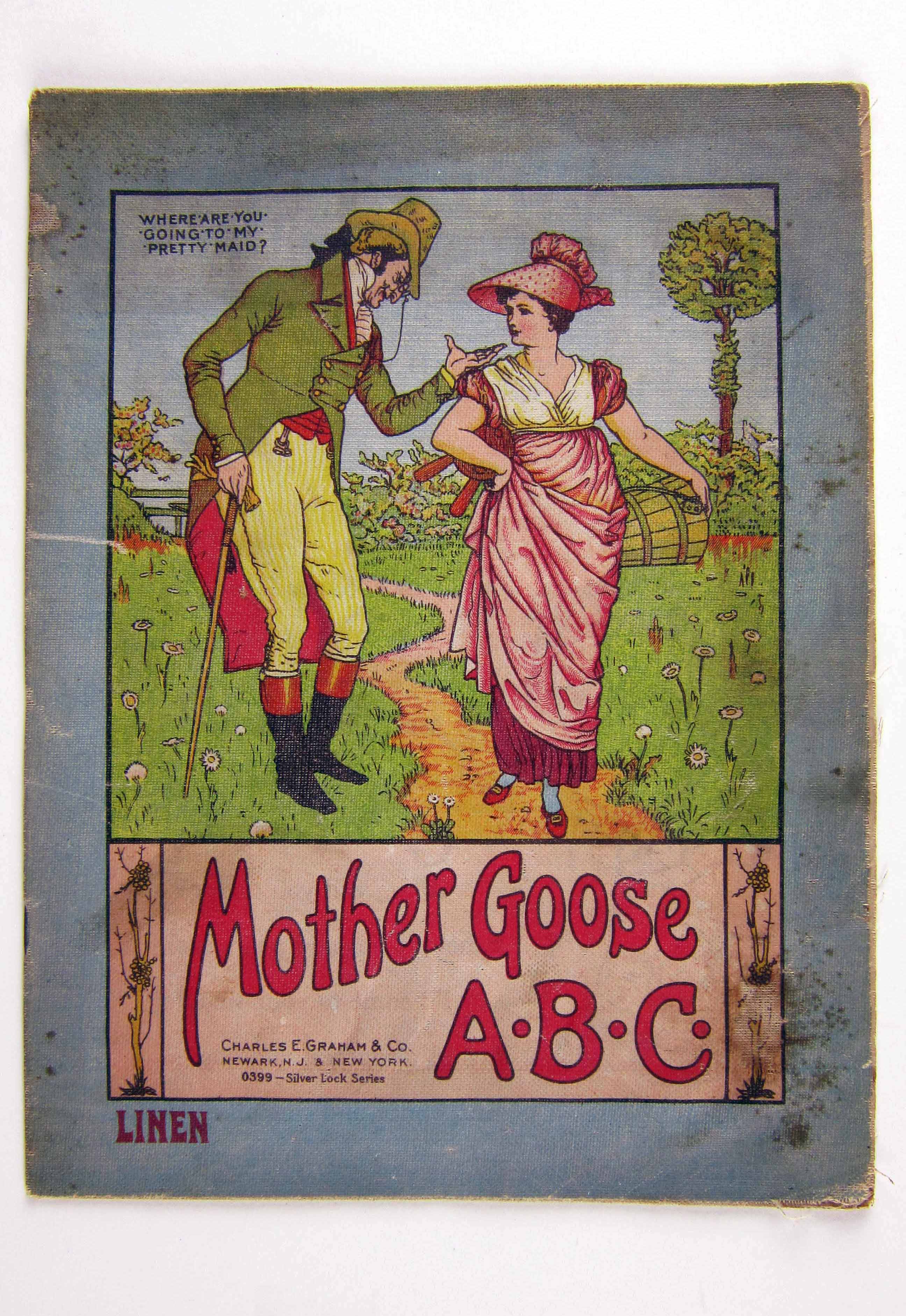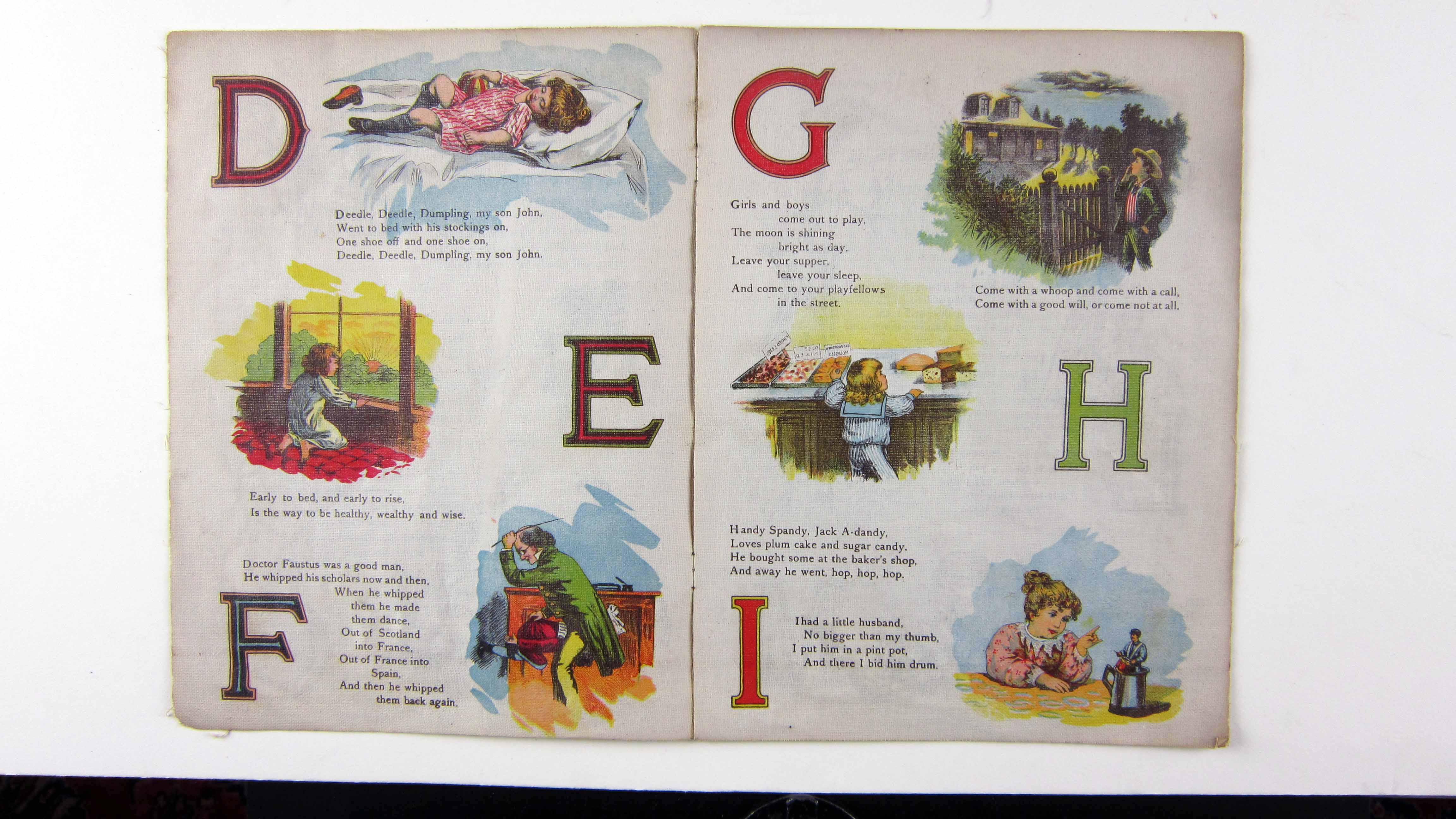

Alphabet books offer a vivid insight into the history of literacy and culture, as well as concepts of childhood. The Children's Book Collection at UCLA contains a rich array of these materials, some well-worn and much-used, some still bright and fresh. Each is a gem of print production and graphical imagery from another time and place. Though the history of alphabet books continues to the present, this exhibit focuses on the works in our collections published between 1700 and 1900, including horn books, primers, works of didacticism and seriousness, whimsy and play.
2. A Jumble ABC
3. A Little Pretty Pocket-Book
4. A New Lottery Book of Birds And Beasts
5. A Pretty Play-Thing for Children of All Denominations
8. ABC of Objects for Home And School
10. ABC with Pictures & Verses
12. Alphabet Et Instruction Pour Les Enfans
16. Dolly's ABC Book
17. Flora's ABC
18. Home ABC
22. Hornbook C. 1700
23. Large Letters for the Little Ones
24. Little ABC Book
25. Little People: An Alphabet
26. Martin's Nursery Battledoor
27. Mother Goose ABC
28. My Darling's ABC
29. Orbis Sensualium Pictus Quadrilinguis
30. People of All Nations: A Useful Toy for Girl Or Boy
31. Picture Alphabet
32. Pretty ABC
33. Railway ABC
34. Rusher's Reading Made Most Easy
38. The Alphabet of Old Friends
40. The Amusing Alphabet for Young Children Beginning To Read
42. The Child's Christian Education
45. The Easter Gift
47. The Favorite Alphabet for the Nursery
49. The Franklin Alphabet And Primer
51. The Golden ABC
55. The Moral And Entertaining Alphabet
57. The Old Testament Alphabet
59. The Picture Alphabet for Little Children
62. The Sunday ABC
63. The Union ABC
64. The Young Child's ABC, Or, First Book
65. Tom Thumb's Alphabet: Picture Baby-Books
67. Warne's Alphabet And Word Book: with Coloured Pictures
68. Wood's Royal Nursery Alphabet
Title Mother Goose ABC



Brief description Physically the book has sustained some damage, including mold damage and fraying along the pages. Charming book with lovely illustrations for an American edition of Mother Goose.
Full description The Mother Goose nursery rhymes are the quintessential stories of childhood. These tales first emerged in the late 18th century and were indicative of the changing perceptions of childhood. The rhymes originated out of adult ballads and bawdy tunes, and often incorporated themes of violence and vulgarity.
By the time the rhymes were published for children, the original context was lost, and publishers realized this nonsensical quality appealed to children. This early 20th century alphabet book was a tamer collection of Mother Goose nursery rhymes. The durable linen book was intended for a very young audience. Two very different illustration styles were included, perhaps because the publishers combined different sheets to make up the book.
Literacy By the early 19th century, industrialization and urbanization left their marks on literacy. Public schooling was mandated, and even individuals in the working class were expected to be somewhat literate. Expansion and colonialism brought wealth, resources and progress to the Western world, and led to a changing conception of childhood.
The Mother Goose ABC book reflected these changes. Gone were the Puritanical warnings and dire spiritual admonitions. In their place were silly poems for young children, accompanied by illustrations of serene, domestic scenes. Some illustrations were cartoonish, with rounded, cherubic children and soft, fluffy animals. The colorful drawings and sweet, lyrical rhymes portrayed the new concept of childhood, and what was considered appropriate reading material for children.
The book demonstrated an understanding of graphical literacy, through its depiction of domestic scenes and farm animals. Young children were familiar with these images. The images were soft, rounded, and cuddly, and these characteristics appealed to young children. There was no expectation of literacy for occupation or for theological study. They rhymes were simply entertaining, a fun way to expose children to the very basic tools of alphabetization.
Childhood A very modern understanding of childhood was reflected in the whimsical content and style of this book. The silly rhymes and vivid images appealed directly to a young child's sense of fun and imagination. Though there was still some emphasis on morality and social expectations, as seen in the image of the schoolmaster whipping his students, the rhymes are mostly nonsensical.
By the early 20th century, the concept of appropriate content for children became more defined, and these rhymes were an amusing way for young children to recognize and learn the alphabet. The cheerful domestic scenes, and the idyllic cover page images depicted a sense of nostalgia, as well as a desire to protect and preserve the innocence of childhood. The grim effects of industrial life weighed upon society, and the desire to shield children from these harsh realities was evident in the whimsical quality of the book.
Iconography A very modern understanding of childhood was reflected in the whimsical content and style of this book. The silly rhymes and vivid images appealed directly to a young child's sense of fun and imagination. Though there was still some emphasis on morality and social expectations, as seen in the image of the schoolmaster whipping his students, the rhymes are mostly nonsensical.
By the early 20th century, the concept of appropriate content for children became more defined, and these rhymes were an amusing way for young children to recognize and learn the alphabet. The cheerful domestic scenes, and the idyllic cover page images depicted a sense of nostalgia, as well as a desire to protect and preserve the innocence of childhood. The grim effects of industrial life weighed upon society, and the desire to shield children from these harsh realities was evident in the whimsical quality of the book.
Production The concept of childhood emerged in the early 18th century, and by the early 20th century, different stages of childhood, such as infancy, were defined. Books were marketed for each separate stage, and linen picture books became popular during the Victorian era. Known for their vivid color images and durability, linen books were intended for young readers. Linen books were comparable to modern board books, were handled roughly, and were hand-washed and reused.
This 1914 book was a great example of the evolutions of color printing. The detailed engravings and bright colors were made possible by lithography, a technique that emerged the early 19th century. The illustrations in this book were typical of the picture books at the turn of the century, with an illustration accompanying each rhyme in order to reinforce each letter of the alphabet.
Publisher Charles E. Graham & Co.
Publication place Newark, NJ
Date 1914
UCLA Call Number 4450689
Repository UCLA Charles E. Young Research Library, Dept. of Special Collections
Dimensions 26 cm, height
Technologies of production Printing
Media and Materials Book made of linen cloth.
Caption